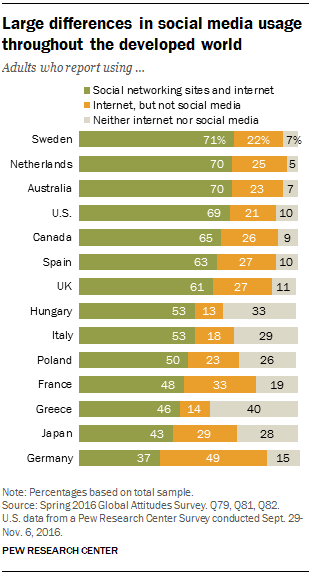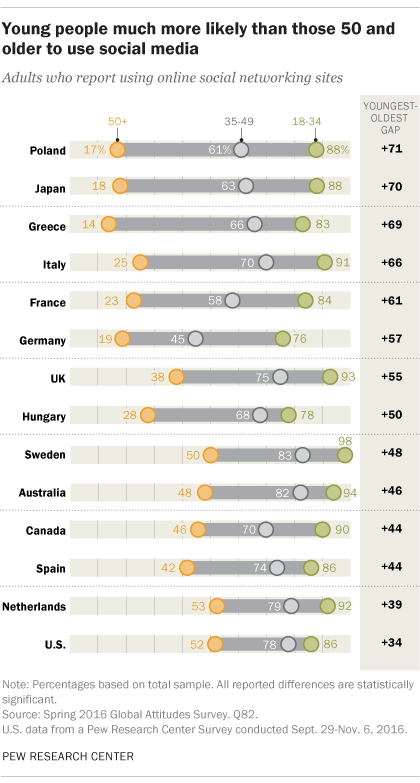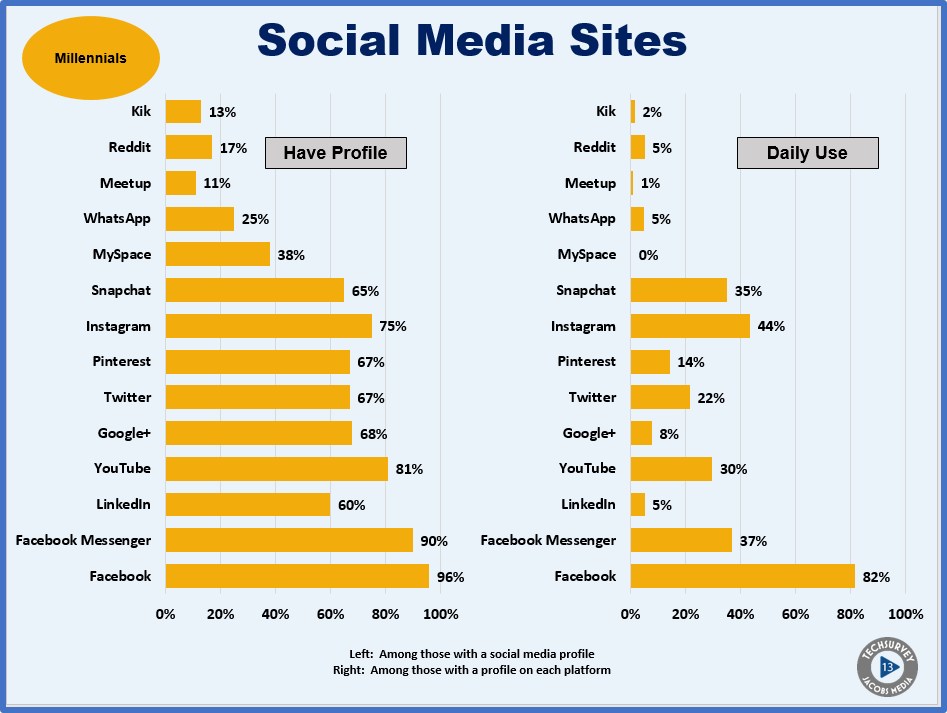 Lori Lewis might not enjoy that vacation in Frankfort and Munich.
Lori Lewis might not enjoy that vacation in Frankfort and Munich.
It turns out that a new study by the Pew Research Center (and reprinted by the World Economic Forum) shows that social media usage in 14 different countries from around the world differs greatly.
And the odd finding is that while a majority of global residents in these countries use the Internet, social media use varies a great deal by nationality.
The biggest social media users are in Sweden, the Netherlands, and Australia where at least 7 in 10 are connected on sites like Facebook or Twitter. The U.S. and Canada are close behind.
But of these 14 surveyed countries across the globe, it turns out that Germans are least likely to be posting memes on Facebook or following POTUS on Twitter.
 Other countries where fewer than half use social media include France, Greece, and Japan. What sets Germany apart for less participation is something better discussed by sociologists. Historic and societal conditions undoubtedly play a role in that country’s exceptionally low social media usage rate.
Other countries where fewer than half use social media include France, Greece, and Japan. What sets Germany apart for less participation is something better discussed by sociologists. Historic and societal conditions undoubtedly play a role in that country’s exceptionally low social media usage rate.
All of this is interesting because here in America, we look at social media use as nearly ubiquitous, but it’s not. Our newest Techsurvey shows that 86% of our huge national sample has a social media profile. But keep in mind our research is web-based, meaning you have to be online in order to respond. As the Pew data shows, one in ten Americans (and nearly as many Canadians) is not online – another stat that is an eye-opener.
Now the other part of the story is in the demographics. Not surprisingly, there are big generational differences that help to explain these global social media disparities.
As Pew notes, those who are younger, better educated, and wealthier have a higher propensity to gather on social media channels. And to that end, there’s a major gap between 18-34s and the 50 and older set.
 Even in Germany, three-fourths of the younger generation are connected on social sites. It’s their Gen Xers that come up short, as less than half of these German 35-49 year-olds are socially connected.
Even in Germany, three-fourths of the younger generation are connected on social sites. It’s their Gen Xers that come up short, as less than half of these German 35-49 year-olds are socially connected.
Far be it from me to speak about the Swedes, the Dutch, and the Aussies. I don’t have a clue as to why their denizens are so much more likely to use social media platforms.
But here in the U.S. and Canada, it’s not difficult to observe high levels of engagement every time you log onto Facebook, Twitter, Instagram, Snapchat, and so many others.
This is especially the case among Millennials in both countries. In TS13, we measure the sites where listeners have a profile – or their “social media cume” (on the left below). And we also note their regularity or TSS – Time Spent Socializing – or the sites they visit daily or more often (on the right).

At least 6 in 10 Millennials are connected on no fewer than 9 social media sites – no other generation comes close. And these younger respondents note five social media sites they use at least every day: Facebook, Instagram, Facebook Messenger, Snapchat, and YouTube. And this data reinforces what Pew is seeing here in the U.S., and around the world.
While Millennials set the social pace, the vast majority of North Americans use social media to spread the word about birthdays, family gatherings, new babies, health issues and death, and of course, political rants. We have a proclivity to bare our souls socially.
In fact, more than half of 50 and older Americans are engaged socially – making the U.S. only second to the Netherlands in AARP-level social media activity.
For media brands strapped for marketing dollars, social media has become the best way to direct fans to enjoy content, contests, and promotions, whether it’s podcasts and on-demand audio, videos, the website, or simply driving them to what’s on the air. And because of radio’s personality and local connections, social engagement offers the medium a unique advantage over faceless algorithms and global media brands.
Social media has become our virtual town hall, our gathering place, our crossroads – flaws and all. There’s never been a better way for radio programmers and personalities to be able to connect with large, attentive audiences.
As Pew suggests, not everyone is on social media. And as the data shows, some countries are well behind America in this dimension. But certainly here in the States, this study is another reminder of the need to have a social plan in place, to know where your audience is socializing, and to devise tactics and strategies that optimize your audience’s activity.
Facebook made its debut more than 13 years ago, and yet many radio stations are still engaging in “random acts of social media.” While Pew tells us the whole world isn’t watching, social media has captured the emotional attention of the vast majority of our audience.
We need to learn how to better connect in their social hubs.
Thanks to my globetrotting friend, James Cridland, for tweeting me about this study.
- What To Do If Your Radio Station Goes Through A Midlife Crisis - April 25, 2025
- A 2020 Lesson?It Could All Be Gone In A Flash - April 24, 2025
- How AI Can Give Radio Personalities More…PERSONALITY - April 23, 2025




Leave a Reply